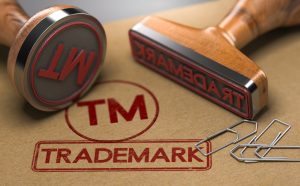What is the value of having a trademark registered in Australia?
When I am looking for something in a crowded online market or at a physical store, I look for the brand I know and trust, and purchase it. Simple, reliable, repeatable.
Trademarks (brands) are essential marketing tools and your business’s identifier in the marketplace. Consumers use brands to identify your offerings against those of your competitors, with the expectation of consistent quality. Brands are hugely valuable assets and can ultimately be worth billions of dollars.
Many businesses over the past year have had to dramatically pivot their offerings and move to, or ramp up, online selling. But the importance of registering a trademark has not waned and arguably has increased.
A registered trademark gives the exclusive right to use, licence and sell or transfer the trademark. The ® symbol used for registered trademarks gives notice that you have the right to use that trademark for the goods or services covered to the exclusion of others and acts a strong deterrent against would-be infringers.[1] Trademark registration also gives you a powerful tool to stop would be copycats encroaching on your territory.
It is possible to carry on your business without registering your trademark. However, relying on an unregistered trademark carries greater risk. Your rights are not located on a searchable register, meaning that another company may build their own rights in the trademark. When it comes to stopping them, you have to be able to establish a superior reputation against this other party by gathering evidence of your use over a long period. A trademark registration eliminates the need to provide that evidence and offers much greater certainty.
Trademarks (brands) are essential marketing tools and your business’s identifier in the marketplace.
The costs to file a trademark application are nominal compared to rebrand and relaunch costs.
Once your trademark is registered, and provided you keep using it, it is renewable every 10 years for as long as you want it.
When should I look at registering a trademark?
You should look at trademark protection early in the process of a new product or offering. A clearance search to check that your brand is available to use and register prior to launch gives a very good level of comfort about your ability to use the trademark and allows you to strategise to achieve registration of the brand. Being ahead of the curve and proactive can make life much easier and save on potential rebrand costs and the marketplace awkwardness of having to withdraw a brand after launch.
What should I be protecting as a trademark and how?
We often think of trademarks as words or logos, but trademarks have far more reach than that. Trademarks can also be colours, shapes, aspects of packaging, movement or animations and even sounds (think jingles) or scents. In Australia, if consumers associate any of these signs with your business, they can be protected as a trademark for your goods and services to the exclusion of others.
At a minimum, protecting your house brand is paramount. Registering trademarks for your main product and services lines is also important. Ask yourself: "If my competitor started using or registering that brand, would it bother me"? If yes, the brand likely warrants trademark protection.
We often think of trademarks as words or logos, but trademarks have far more reach than that.
A trademark registration does not protect the brand for all goods and services but covers certain goods and services nominated at the time of filing the application. There are 45 classes of goods and services to choose from. It is essential (though not always straightforward) to get the correct goods and services specified, because:
- Once the trademark application is filed you cannot expand those goods and services (you would need to file a new application);
- You get protection for your trademark for the goods and services specified (and for similar goods or services), so you can only stop people using the same or a similar trademark if it is in relation to same or similar goods or services specified in your application.
What if I see someone else using my trademark, including online?
This is where the importance of a trademark registration comes to the fore. If you see unauthorised use of your trademark in relation to goods or services covered in your registration, you are in a strong position to ask them to stop. Letting someone know you have a registered trademark is often enough to get them to cease their activity. However, if they do not stop, you can take the matter further.
Also consider the forum of the unauthorised use. If it is on social media, search engines, or an eCommerce website, you may be able to make a complaint on that platform to immediately remove the conduct. You need to have a registered trademark to do this.
What about protecting my trademark overseas?
In most cases, trademarks are national (per country) rights.[2] A trademark which is used or protected in one country does not enjoy protection in another country. However, the protection for a registered trademark can be extended to other countries by filing national applications in those countries or filing an International Registration via Madrid Protocol, designating countries who are members of the Madrid Protocol.
You can also claim priority and benefit from your Australian filing date (say 1 June 2021) if you file overseas within 6 months (on or before 1 December 2021). If someone else files an intervening trademark overseas between those dates, you can trump them with your earlier filing date.
First-to-file countries are important to identify early. In those markets, such as China, if someone files a trademark application before you (even if you have been using there) that application / registration can block not only a later application from you but also your use in that country – effectively blocking you out of the market.
What extra steps can I take to protect my trademark rights?
Once you have your trademark registered, you can build on your activities to maximise your investment by:
- Regularly checking your trademark portfolio to secure a competitive advantage and maintain market dominance. Actively maintaining and managing your trademark portfolio is critical to extracting value from your investment.
- Filing a Notice of Objection of your registered trademarks with Australian Border Force (or similar Customs authority in your jurisdiction). This is a highly efficient way to stop counterfeit products hitting the market by seizing them at the border.
- Looking your business or trademarks up online on search engines, online sales websites and on social media. If your brand is being used without authority to indicate the origin of another entity's products or business, you may be able to lodge a complaint to take down the infringing posts.
So you can get the best value out of your brand by registering it as a trademark. This offers more certainty, avoids unnecessary costs down the track, allows you to gain better value from your investment and protect this essential marketing tool to the exclusion of others.
[1] If your trademark is not registered, you can still use the ™ symbol to show you are using the brand as a trademark.
[2] Compare an European Community Trademark, which gives trade registration in all 27 member countries.
Elizabeth Godfrey, Principal, Trademarks Attorney
Davies Collison Cave
Address: Level 15, 1 Nicholson Street, Melbourne VIC 3000
Tel: +61 (3) 9254 2777
Fax: +61 (3) 9254 2770
Email: egodfrey@dcc.com
Davies Collison Cave is a leading Australian intellectual property legal practice that consistently files more patent applications than any other firm in the country. They provide expert services in the areas of patents, trademarks, trade secrets, copyright and design protection, licensing, litigation and related legal and commercial matters.
Elizabeth Godfrey specialises in all aspects of trademark protection including selecting, searching, applying for and prosecuting trademark applications both local and international. She has an extensive opposition and non-use practice and exceptional knowledge and expertise in running opposition matters.





















